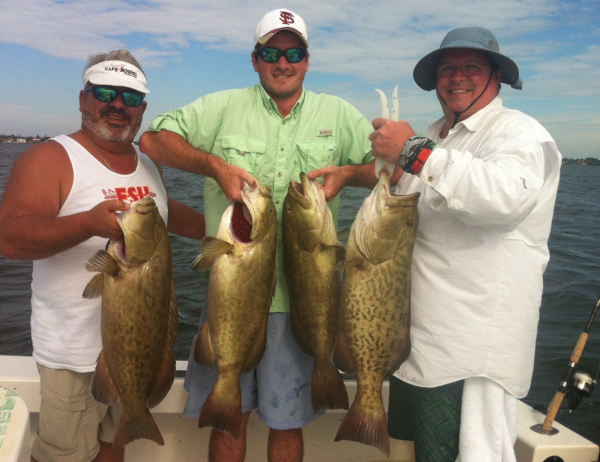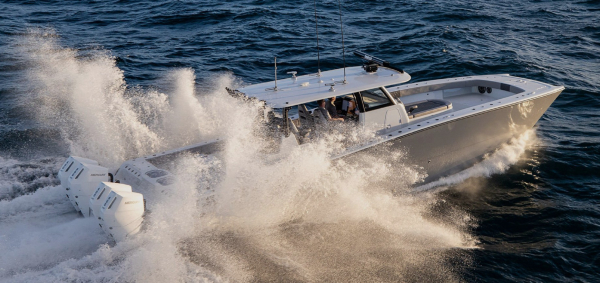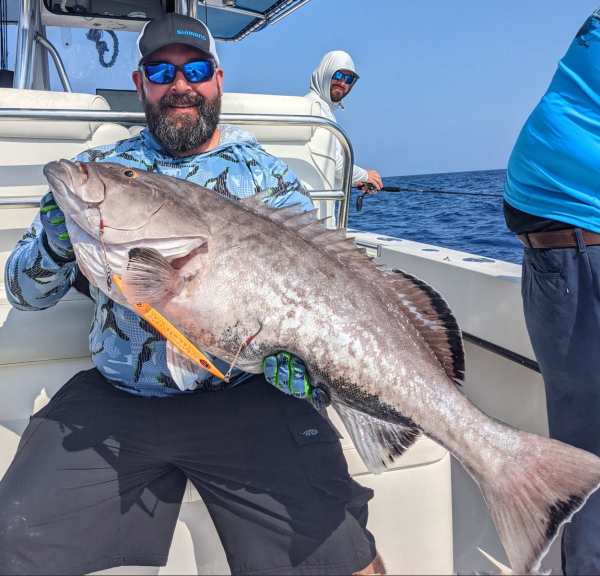
From Tampa Bay to Pensacola, gag grouper have long been considered almost a sure thing to load a fish box with big, tasty reef fish.
It ain’t that way anymore on much of Florida’s western shore.
Fish are fewer, and the ones anglers can find are smaller on most days.
The federal regulators have just issued season dates that would have been deemed unimaginably restrictive a few years ago—just 15 days, from Sept. 1 to 15, for this year.
While the feds are routinely vilified by anglers for being too restrictive on harvest numbers, nobody questions that the gag fishery is a shadow of what it once was.
Limits are harder to fill. And fish are found in fewer places, particularly within 50 miles of shore.
Biologists and fishermen both agree: gag grouper numbers are down, and not just a little. The Gulf of America Fishery Management Council’s most recent stock assessment found the population is both “overfished” and currently “undergoing overfishing,” a troubling double red flag.
Part of the problem lies in the grouper’s unusual life history. Gags are what scientists call protogynous hermaphrodites. Every fish begins life as a female, and only some switch to male after a decade or more of growth. The big males are crucial to successful spawning.
But because anglers naturally target the largest fish, those future breeders are often the first to disappear.
Today, surveys suggest that less than two percent of the population is male, leaving the stock with a dangerously thin reproductive base. When you add in heavy fishing pressure on spawning aggregations—dense winter and spring gatherings where the fish are easiest to catch—the odds of recovery shrink even further.
That’s not all. Red tide outbreaks have killed thousands of gag grouper in recent decades, particularly along Florida’s central Gulf Coast. In some years, scientists estimate that as much as 20 percent of the stock has been wiped out in a single event.
I’ve been out there on days when you could run a tide line and see dead grouper floating, along with other reef fish, for five miles.
Combine that with habitat loss from coastal development—young gags often grow up on the grass flats before traveling to deep water reefs after maturity--and the species has been under steady stress even without a single hook in the water.
Is Technology Getting Too Good?
Yet the hooks are impossible to ignore, and here is where modern fishing technology has changed the game. Not long ago, getting to grouper country meant owning a large, expensive vessel, navigating by compass and landmarks, and often drifting aimlessly over structure. A successful trip required both skill and a fair bit of luck.
Today, however, open outboard boats in the $50,000 range can safely run 30 miles offshore, often at 40 mph or faster, opening the fishery to tens of thousands more anglers.
Once offshore, those anglers can home in on prime reefs within 15 feet thanks to precision GPS systems. Previously, getting within several hundred feet was pretty good.
And long-legged electric trolling motors with GPS anchoring now allows locking the boat in exactly the right spot, despite current, to put baits in front of the fish. Previously, getting the boat in the right position by anchoring was time-consuming, laborious and often unsuccessful. In 100 feet of water, the captain had to calculate where to drop anchor hundreds of feet upcurrent so that the boat would drift back to be more or less in the right spot and still hold position. That game is a thing of the past with spot lock trolling motors.

Now anglers can pound a single piece of habitat relentlessly, dropping baits until every legal fish is pulled up. And if they miss a few, another boat is likely to move in minutes after they leave to finish the job. Sublegal fish are released, but many are eaten by sharks or suffer the bends and don’t survive to get back down to the reef.
Layer on modern sonar, and the issue grows. Traditional fish finders only revealed what lay beneath the hull. New “live sonar” systems let anglers watch fish in real time, tracking them as they swim, watching them rise to meet a bait, even distinguishing grouper from snapper.
The result is undeniable: catch efficiency has skyrocketed. What once took all day of searching can now be accomplished in a single stop. Anglers report that once‑productive wrecks in 60 to 80 feet of water are fished out, forcing longer runs to 120 feet or more just to find a handful of keepers. The grouper in some areas, particularly closer to shore, are not just fewer, but smaller, a sign that the big breeders have been heavily culled.

The result is that anglers can burn through the annual quota in just days, leading to tighter and tighter season. These measures prevent outright collapse, but they do little to address the root problem: modern technology makes it almost too easy to catch gag grouper.
Scientists say rebuilding could take nearly two decades under the strictest management plans.
The future of gag grouper may depend on finding balance. Protecting spawning aggregations, enforcing stricter size limits to let more females turn male, and ever shorter seasons—or perhaps none at all—seem to be in the future.
On the bright side, really tight harvest measures have worked astoundingly well for red snapper in the Gulf over the last 15 years—the same might apply to gags, but it will mean several years of scant harvests in the meantime.
— Frank Sargeant
Frankmako1@gmail.com